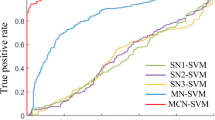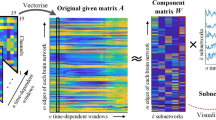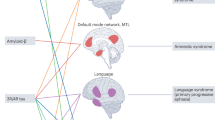Abstract
Parkinson’s disease (PD) is a neurological disorder defined by the gradual loss of dopaminergic neurons in the substantia nigra pars compacta, which causes both motor and non-motor symptoms. Understanding the neuronal processes that underlie PD is critical for creating successful therapies. This work presents a novel strategy that combines machine learning (ML) and stochastic modelling with connectomic data to understand better the complicated brain pathways involved in PD pathogenesis. We use modern computational methods to study large-scale neural networks to identify neuronal activity patterns related to PD development. We aim to define the subtle structural and functional connection changes in PD brains by combining connectomic with stochastic noises. Stochastic modelling approaches reflect brain dynamics’ intrinsic variability and unpredictability, shedding light on the origin and spread of pathogenic events in PD. We created a hybrid modelling formalism and a novel co-simulation approach to identify the effect of stochastic noises on the cortex-BG-thalamus (CBGTH) brain network model in a large-scale brain connectome. We use Human Connectome Project (HCP) data to elucidate a stochastic influence on the brain network model. Furthermore, we choose areas of the parameter space that reflect both healthy and Parkinsonian states and the impact of deep brain stimulation (DBS) on the subthalamic nucleus and thalamus. We infer that thalamus activity increases with stochastic disturbances, even in the presence of DBS. We predicted that lowering the effect of stochastic noises would increase the healthy state of the brain. This work aims to unravel PD’s complicated neuronal activity dynamics, opening up new options for therapeutic intervention and tailored therapy.
Stochastic modelling of brain networks.
Access this chapter
Tax calculation will be finalised at checkout
Purchases are for personal use only
Similar content being viewed by others
References
Salaramoli, S., Joshaghani, H.R., Hosseini, M., Hashemy, S.I.: Therapeutic effects of selenium on alpha-synuclein accumulation in substantia Nigra pars compacta in a rat model of Parkinson’s disease: behavioral and biochemical outcomes. Biol. Trace Element Res. 1–11 (2023)
Shaheen, H., Pal, S., Melnik, R.: Multiscale co-simulation of deep brain stimulation with brain networks in neurodegenerative disorders. Brain Multiphys. 3, 100058 (2022)
Shaheen, H., Melnik, R., The Alzheimer’s Disease Neuroimaging Initiative: Bayesian inference and role of astrocytes in amyloid-beta dynamics with modelling of Alzheimer’s disease using clinical data. arXiv Preprint arXiv:2306.12520 (2023)
Johnson, K.A., Okun, M.S., Scangos, K.W., Mayberg, H.S., de Hemptinne, C.: Deep brain stimulation for refractory major depressive disorder: a comprehensive review. Mol. Psychiatry 1–13 (2024)
Peralta, M., Jannin, P., Baxter, J.S.: Machine learning in deep brain stimulation: a systematic review. Artif. Intell. Med. 122, 10219 (2021)
Tai, A.M., et al.: Machine learning and big data: implications for disease modelling and therapeutic discovery in psychiatry. Artif. Intell. Med. 99, 101704 (2019)
Thieu, T.K.T., Melnik, R.: Coupled effects of channels and synaptic dynamics in stochastic modelling of healthy and Parkinson’s-disease-affected brains. AIMS Bioeng. 9(2), 213–238 (2022)
Oliveira, A.M., Coelho, L., Carvalho, E., Ferreira-Pinto, M.J., Vaz, R., Aguiar, P.: Machine learning for adaptive deep brain stimulation in Parkinson’s disease: closing the loop. J. Neurol. 270(11), 5313–5326 (2023)
Meier, J.M., et al.: Virtual deep brain stimulation: multiscale co-simulation of a spiking basal ganglia model and a whole-brain mean-field model with the virtual brain. Exp. Neurol. 114111 (2022)
Peng, G.C., et al.: Multiscale modeling meets machine learning: what can we learn? Arch. Comput. Methods Eng. 28(3), 1017–1037 (2021)
Seguin, C., Sporns, O., Zalesky, A.: Brain network communication: concepts, models and applications. Nat. Rev. Neurosci. 24(9), 557–74 (2023)
Novelli, L., Friston, K., Razi, A.: Spectral dynamic causal modeling: a didactic introduction and its relationship with functional connectivity. Network Neurosci. 1–25 (2024)
Vashistha, R., et al.: ParaPET: noninvasive deep learning method for direct parametric brain PET reconstruction using histoimages. EJNMMI Res. 14(1), 10 (2024)
Woźniak, S., Pantazi, A., Bohnstingl, T., Eleftheriou, E.: Deep learning incorporating biologically inspired neural dynamics and in-memory computing. Nat. Mach. Intell. 2(6), 325–336 (2020)
Shi, P., Li, J., Zhang, W., Li, M., Han, D.: Characteristic frequency detection of steady-state visual evoked potentials based on filter bank second-order underdamped tristable stochastic resonance. Biomed. Signal Process. Control 84, 104817 (2023)
Liu, C., Wang, J., Deng, B., Li, H., Fietkiewicz, C., Loparo, K.A.: Noise-induced improvement of the Parkinsonian state: a computational study. IEEE Trans. Cybern. 49(10), 3655–3664 (2018)
Charalambous, E., Djebbara, Z.: On natural attunement: shared rhythms between the brain and the environment. Neurosci. Biobehav. Rev. 155, 105438 (2023)
Shaheen, H., Melnik, R.: Deep brain stimulation with a computational model for the cortex-thalamus-basal-ganglia system and network dynamics of neurological disorders. Comput. Math. Methods 2022, 8998150 (2022)
Zheng, Y., et al.: Noise improves the association between effects of local stimulation and structural degree of brain networks. PLoS Comput. Biol. 19(5), e1010866 (2023)
Touboul, J.D., Piette, C., Venance, L., Ermentrout, G.B.: Noise-induced synchronization and antiresonance in interacting excitable systems: applications to deep brain stimulation in Parkinson’s disease. Phys. Rev. X 10(1), 011073 (2020)
Staffaroni, A.M., et al.: A longitudinal characterization of perfusion in the aging brain and associations with cognition and neural structure. Hum. Brain Mapp. 40(12), 3522–3533 (2019)
Liang, J., Yang, Z., Zhou, C.: Excitation-inhibition balance, neural criticality, and activities in neuronal circuits. Neuroscientist 10738584231221766 (2024)
Seguin, C., Jedynak, M., David, O., Mansour, S., Sporns, O., Zalesky, A.: Communication dynamics in the human connectome shape the cortex-wide propagation of direct electrical stimulation. Neuron 111(9), 1391–1401 (2023)
Carron, R., Chaillet, A., Filipchuk, A., Pasillas-Lépine, W., Hammond, C.: Closing the loop of deep brain stimulation. Front. Syst. Neurosci. 7, 112 (2013)
Abós, A., et al.: Discriminating cognitive status in Parkinson’s disease through functional connectomics and machine learning. Sci. Rep. 7(1), 45347 (2017)
Petersen, M.V., et al.: Holographic reconstruction of axonal pathways in the human brain. Neuron 104(6), 1056–1064 (2019)
Rubin, J.E., Terman, D.: High frequency stimulation of the subthalamic nucleus eliminates pathological thalamic rhythmicity in a computational model. J. Comput. Neurosci. 16(3), 211–235 (2004)
Author information
Authors and Affiliations
Corresponding author
Editor information
Editors and Affiliations
Rights and permissions
Copyright information
© 2024 The Author(s), under exclusive license to Springer Nature Switzerland AG
About this paper
Cite this paper
Shaheen, H., Melnik, R. (2024). Neural Dynamics in Parkinson’s Disease: Integrating Machine Learning and Stochastic Modelling with Connectomic Data. In: Franco, L., de Mulatier, C., Paszynski, M., Krzhizhanovskaya, V.V., Dongarra, J.J., Sloot, P.M.A. (eds) Computational Science – ICCS 2024. ICCS 2024. Lecture Notes in Computer Science, vol 14835. Springer, Cham. https://doi.org/10.1007/978-3-031-63772-8_4
Download citation
DOI: https://doi.org/10.1007/978-3-031-63772-8_4
Published:
Publisher Name: Springer, Cham
Print ISBN: 978-3-031-63771-1
Online ISBN: 978-3-031-63772-8
eBook Packages: Computer ScienceComputer Science (R0)




